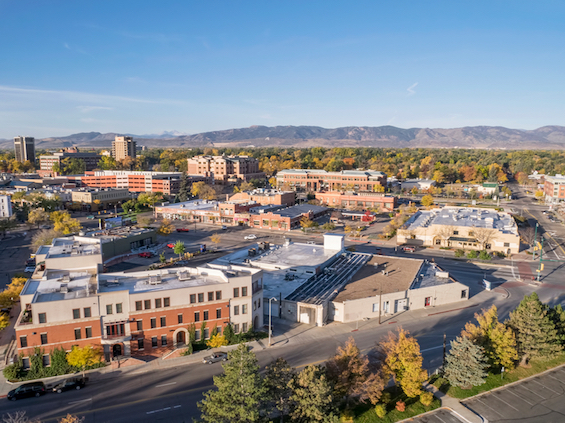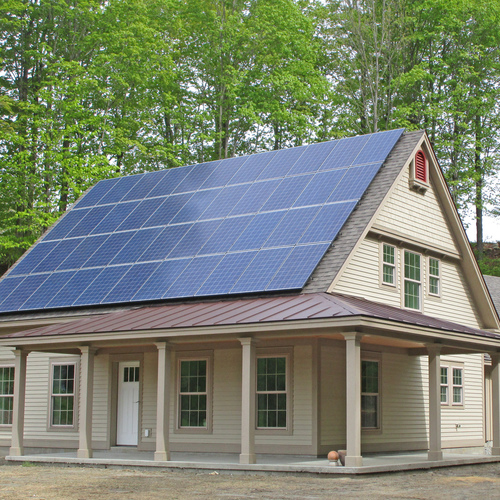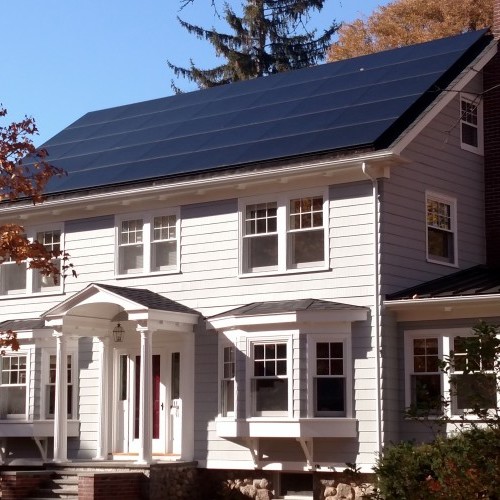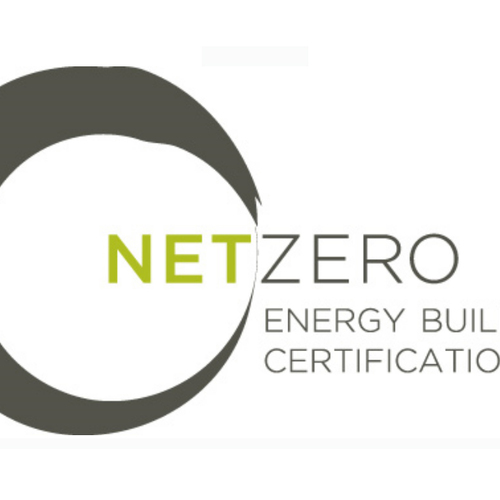
By IAIN CAMPBELL
Net-zero energy (NZE) buildings — those that are responsible for the production of as much clean energy as, or more clean energy than, they use annually — have been gaining momentum around the world. And now, even net-zero energy districts are being contemplated, like Fort Collins’s Fort ZED, Arizona State University, and UC Davis’s West Village. However, there still remains an industry-wide perception that net-zero energy is too expensive, or comes at a much higher incremental cost over business as usual.
Master developers of NZE districts face the challenge of driving exceptional energy performance without deterring prospective parcel developers or incurring exorbitant development costs themselves. Prospective parcel developers may fear that stringent performance requirements will require higher upfront capital costs or that achieving ultra-low energy buildings will not be cost-effective in the long run, compared to business as usual. Prospective tenants of NZE developments may fear that additional construction costs will get passed through to them in the form of higher rents, or that the ongoing cost of procuring renewable energy may be higher than conventional energy bills.
But in our newly released Insight Brief, “An Integrative Business Model for Net-Zero Energy Districts,” Rocky Mountain Institute (RMI) presents an innovative business model for developing net-zero energy or ultra-low energy districts and details how pursuing net-zero energy is not a cost, but rather a significant value driver.
Our innovative business model develops net-zero energy districts in a way that is attractive to the district developer, parcel developer, and tenants; creates a profitable business for an integrated energy services provider; and benefits the local electric grid and neighboring community. It was developed specifically for a 180-acre development in a midsize U.S. city.
Making net-zero energy financially attractive
Net-zero energy is achieved in four steps: (1) Identify on-site renewable energy capacity and thus set the district’s energy “budget;” (2) use superefficient district geothermal heating and cooling; (3) set design standards to drive load down to as little as 75% below code; and (4) iterate between steps 1 and 3, optimizing based on the net present value of the life-cycle cost until net-zero energy is achieved.
These four steps must be done in a way that makes the project financially attractive to developers, tenants, and investors.Three things must occur to make net-zero energy financially attractive to parcel developers: (1) on-site solar photovoltaics should be owned and developed by a third party; (2) the capital cost of heating and cooling equipment should be moved out of buildings and into a district heating/cooling system; and (3) there should be on-bill financing for the incremental cost of energy efficiency. This puts first costs at or below the cost of a business-as-usual (BAU) building. On top of that, high-performance buildings typically yield higher sale prices or rents.
To make net-zero energy financially attractive to tenants, the BAU tenant energy bill must be replaced by a net-zero energy bill that includes three components: (1) an electricity bill that includes the third-party-owned PV costs; (2) district heating and cooling costs; and (3) on-bill repayment of the energy efficiency financing. The sum of these three components is lower than BAU, and the tenant inhabits a healthier and more comfortable building.
Net-zero energy business models are financially attractive to investors because the large capital investments in PV, district heating and cooling, and energy efficiency are repaid over time on utility bills, generating a steady return that benefits from enhanced credit because of the utility-customer relationship.The elements of this business plan can be broken into discrete components consisting of services and value streams. Some of these components are interdependent, while others stand alone.
A profitable business for integrated energy service providers
District-scale developments have a unique opportunity to put in place a dedicated integrated energy services provider (IESP) to manage multiple energy-related operations and act as a multipurpose developer, financier, operator, and administrator of energy systems, as well as a regulator of building performance requirements. The IESP may be one organization or multiple organizations acting in cooperation, but the key is to execute multiple functions in concert to achieve performance objectives in the most economical way.
IESP functions include:
1. Sales of electricity
Acting as an electrical micro-utility providing retail electricity to the district’s electricity customers, managing supply, and conducting customer billing. The IESP functions as an intermediary between the regional electric grid and the district’s microgrid, negotiating interconnection terms, ancillary services, demand charges, consumption charges, and feed-in tariffs with the regional utility.
2. District heating and cooling
Handling district heating and cooling through a central district heating and cooling system (geothermal heat pump systems being the most efficient). Compared to individual building plants, district heating and cooling is much more efficient, has lower maintenance costs, is more reliable, and has longer equipment lifetimes. Equally important to this business case, district heating and cooling shifts upfront capital costs from parcel developers to the IESP.
3. Neighborhood diversity
Optimizing heating and cooling across a diverse neighborhood building stock with a district heating and cooling system. Rather than designing individual building systems to meet individual-building instantaneous peak loads, a district system is designed to meet the collective peak load, which is considerably lower, due to non-coincident peaks across the diverse building stock. This means smaller overall system capacity and lower first costs.
4. Demand-side management
The IESP would manage multiple megawatts of load at the district heating and cooling plant, as well as introduce the possibility for additional thermal storage that would make the load even more flexible. Demand response capabilities in other building loads, such as lighting, water heating, or plug loads, would make that flexible, demand-side resource even larger.
The importance of megawatts and “negawatts” at a district scale
Renewable supply is a critical component of achieving net-zero at a district scale, and it is necessary to optimize renewable energy deployment across the entire district to achieve the best economics. In this model, the IESP is responsible for all renewable energy development, whether on-site, such as ground-mounted, rooftop, or carport-mounted photovoltaics (PV), or off-site via power purchase agreements. It can then recoup the cost of the system via utility billing to customers.
Depending on the regulatory environment, it can negotiate with the regional utility to capture maximum value from the large-scale, on-site generation, which could be in the form of net metering, feed-in tariffs, or simply wholesale into the regional spot market. Having one single solar developer means that on-site renewables can be phased and developed en masse, negotiating lower costs and capturing economies of scale in mass installations.
The IESP also can manage the demand side, encouraging the deployment of high-performance buildings that benefit owners, occupants/tenants, and the environment through district-wide energy efficiency financing. Compared to conventional buildings, superefficient buildings (buildings that perform 50% better than code-compliant buildings) may cost more upfront, as a result of expert integrative design costs, higher-performance envelopes, smart controls, best-in-class systems, and rigorous construction quality, testing, and commissioning.
But this incremental cost for superefficiency can be financed in the form of a loan from the IESP, removing any incremental first costs from the parcel developer. That loan can be repaid over time on utility bills by the electricity and district heating and cooling customers who are benefiting from the lower energy bills. The incremental capital investment, and resultant property value, of energy efficiency thus stays with the property. The IESP lender also has recourse or collateral against defaulting customers, making the on-bill financed loans more credit-worthy. Reducing demand at a district scale also significantly lowers the cost of renewable energy supply.
Building better, cleaner communities
District-scale developments are uniquely positioned to be a major driver of the next generation of high-performance buildings and an intelligent electric grid, and to benefit financially from such leadership.
Not all of the value elements of this business case will pertain to every large-scale development, given their variations in size, use types, regulatory environment, project goals, energy prices, access to capital, or operator sophistication. But stand-alone components or hybrids of this model can still be valuable, especially under the guidance of an IESP that plays an integrative role in value capture and creative financing, making such developments attractive to investors, developers, and tenants alike.
Net-zero districts will be explored during October’s Getting to Zero National Forum in Denver, Colorado. View the program and register today.
Iain Campbell is managing director of the Rocky Mountain Institute. This post originally appeared at the RMI Outlet.
Weekly Newsletter
Get building science and energy efficiency advice, plus special offers, in your inbox.














0 Comments
Log in or create an account to post a comment.
Sign up Log in